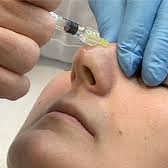
There are two main types of nose surgery procedures, open, and closed. However, they have variations that involve incisions made inside the nostril or across the bottom septum.
Nose surgery procedures, referred to as rhinoplasty operations in the medical world are invasive surgical operations that can have a very spectacular effect on the patients self-esteem, by improving the functionality or the appearance of their nose.
This kind of surgery is generally performed by a qualified plastic surgeon that is specialized in head-and-neck surgery, or otolaryngology.
Moreover, you should ensure that your surgeon is certified by the American Board of Plastic Surgery, as this way you can rest assured that the risk of post-op complications and scarring is much reduced.
There are two main types of nose surgery procedures, open, and closed. However, they have variations that involve incisions made inside the nostril or across the bottom septum. Nevertheless, the process is basically the same, as it does not depend of the incision access.
The skin and the soft tissue are detached from the bone and underlying cartilage, and if any humps are present, the surgeon will use a chisel to remove the bone and a scalpel to remove the cartilage.
Transplant or synthetic implants are then used to support and shape the nose filling into the desired form. Finally, a metal splint will be taped to the patients nose to preserve the new shape for the week following the surgery.
A rhinoplasty operation can be either reconstructive or functional, depending on the reason why the patient decided to have it. Nose surgery procedures are also divided into primary or secondary operations. The primary procedure refers to the initial surgery, and it not depends on whether it is functional or reconstructive.
The secondary counterpart refers to the surgery that is performed to correct any unsatisfactory outcome of a previous procedure. There are many possible reasons why a secondary procedure could be necessary and the truth is that the rate is fairly high, as up to 20 percent decide to come back for a secondary operation.
Return to the home page of MadProgress.com

